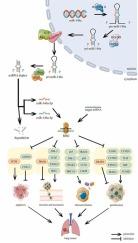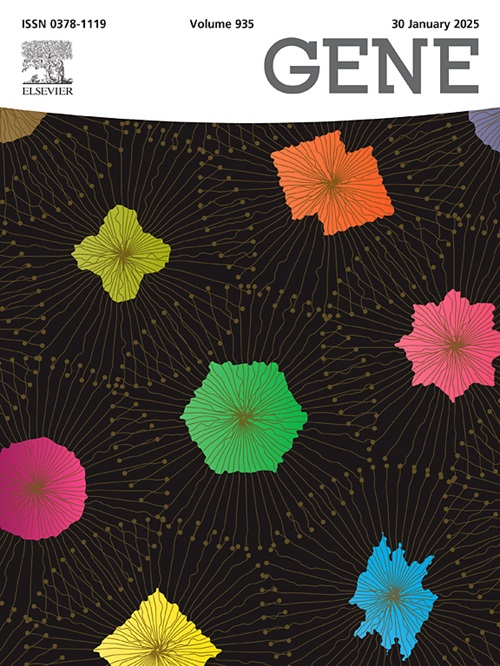Dual role and ceRNA networks of miR-146a in lung cancer: regulating proliferation, metastasis, and chemoresistance
IF 2.4
3区 生物学
Q2 GENETICS & HEREDITY
引用次数: 0
Abstract
Lung cancer persists as the predominant cause of cancer-related mortality globally. MicroRNAs, a class of short non-coding RNAs, are recognized as critical regulators in the pathogenesis of lung cancer, functioning either as oncogenes or tumor suppressors. Among these, miR-146a has been identified as a significant modulator in non-small-cell lung cancer, exerting influence over cellular proliferation, resistance to chemotherapy, apoptosis, and metastatic potential. Notably, miR-146a displays a dualistic role, acting as either a tumor suppressor or an oncogene depending on the molecular mechanisms. Furthermore, its interaction with non-coding RNAs—including circular and long non-coding RNAs—through a competing endogenous RNA network contributes additional regulatory complexity. Dysregulation of miR-146a–associated ceRNA networks influences tumor proliferation, invasion, immune evasion, and therapy resistance. Despite the breadth of existing research, the mechanisms underlying this dual behavior remain insufficiently clarified. This review synthesizes current findings regarding miR-146a’s bidirectional functions and explores its potential clinical applications as both a diagnostic marker and a therapeutic target in lung cancer.

miR-146a在肺癌中的双重作用和ceRNA网络:调节增殖、转移和化疗耐药。
肺癌仍然是全球癌症相关死亡的主要原因。MicroRNAs是一类短的非编码rna,在肺癌的发病机制中被认为是关键的调节因子,既可以作为致癌基因,也可以作为肿瘤抑制因子。其中,miR-146a已被确定为非小细胞肺癌的重要调节剂,对细胞增殖、化疗耐药性、细胞凋亡和转移潜力产生影响。值得注意的是,miR-146a显示出双重作用,根据分子机制,它既可以作为肿瘤抑制因子,也可以作为癌基因。此外,它通过竞争的内源性RNA网络与非编码RNA(包括环状和长链非编码RNA)相互作用,增加了调控的复杂性。mir -146a相关ceRNA网络的失调影响肿瘤增殖、侵袭、免疫逃避和治疗抵抗。尽管已有广泛的研究,但这种双重行为背后的机制仍然不够明确。本文综述了目前关于miR-146a双向功能的研究结果,并探讨了其作为肺癌诊断标志物和治疗靶点的潜在临床应用。
本文章由计算机程序翻译,如有差异,请以英文原文为准。
求助全文
约1分钟内获得全文
求助全文
来源期刊

Gene
生物-遗传学
CiteScore
6.10
自引率
2.90%
发文量
718
审稿时长
42 days
期刊介绍:
Gene publishes papers that focus on the regulation, expression, function and evolution of genes in all biological contexts, including all prokaryotic and eukaryotic organisms, as well as viruses.
 求助内容:
求助内容: 应助结果提醒方式:
应助结果提醒方式:


